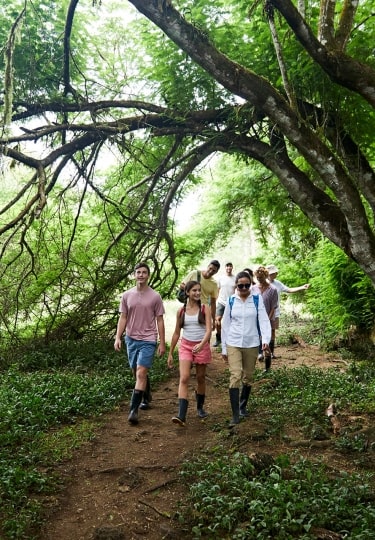An expedition to the Galapagos, an archipelago scattered some 600 miles off the coast of Ecuador, is an incredible family adventure with ample opportunities for bonding. For adults and children alike, the islands offer education, thrilling activities, and a connection with nature that will never be forgotten.
The Galapagos are so far removed from the distractions of everyday life that you’ll easily enjoy quality time together as a family. Children will come away with first-hand experience of conservation in action, while every family member will leave this unique place in awe of its unique flora and fauna. Here are twelve ways to make the most out of your Galapagos islands family vacation.
What’s the Best Age to Visit the Galapagos With Kids?
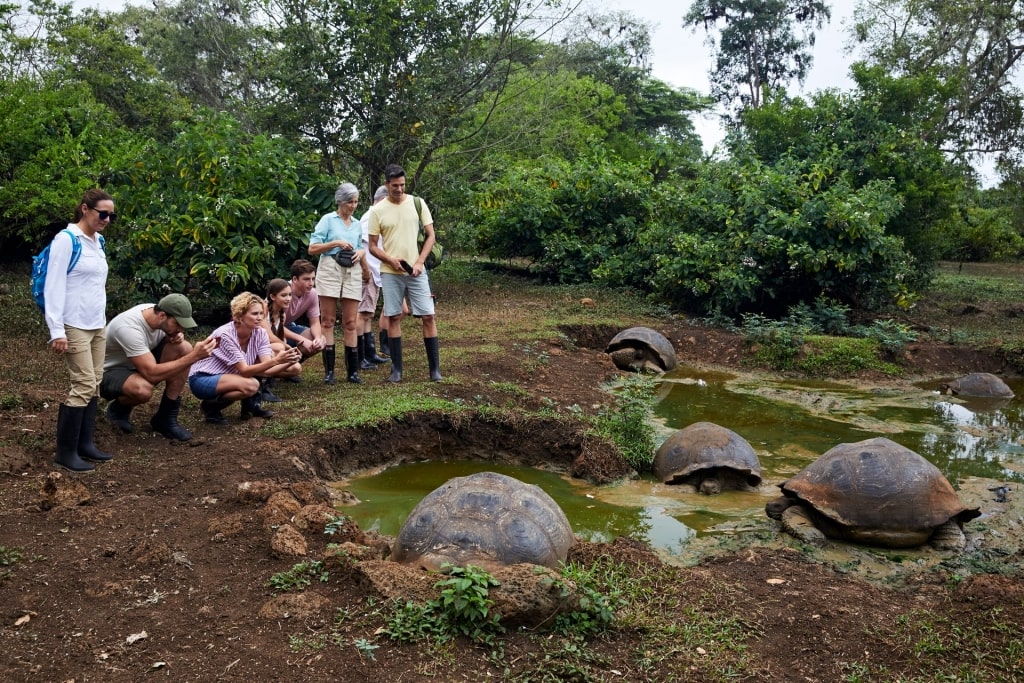
Galapagos tortoise
If you’re looking to get the most out of a visit to the Galapagos with kids, the minimum age for young travelers is around eight years old. You’ll benefit most as a family if you can enjoy many activities together, such as hiking, snorkeling, and kayaking.
Any age above eight is fantastic; there’s no upper limit. Younger children will absorb all of the sight and sounds. Teens will open their eyes to a magical world of wildlife and nature, as the Galapagos is extraordinary enough to broaden the horizons of even the most uncommunicative, tech-obsessed teenager.
If your kids are younger than eight, wait another couple of years to plan your Galapagos vacation. You don’t want children to be so young they won’t remember the experience—and traveling with a baby to a place where the heat is so intense isn’t ideal, not to mention the fact that one of you would have to be in charge of childcare every day.
Pick Your Season

Even if you have to plan your trip around school vacations, you’re in luck since the Galapagos is a year-round destination.
January to June is the hot season when the water is warmer and the wildlife more active on land. If you visit on a family vacation during spring break, you should see newly hatched iguanas and sea turtles, and flowers in bloom. The visibility is better in the water during this hot, more humid season.
June to December is the dry season when the water becomes slightly cooler. This is the best time to visit the Galapagos if you want to spot whales and dolphins. You’ll see blue-footed boobies performing their curious mating dance in July, while August is the peak month for spotting playful sea lion pups.
Be Prepared
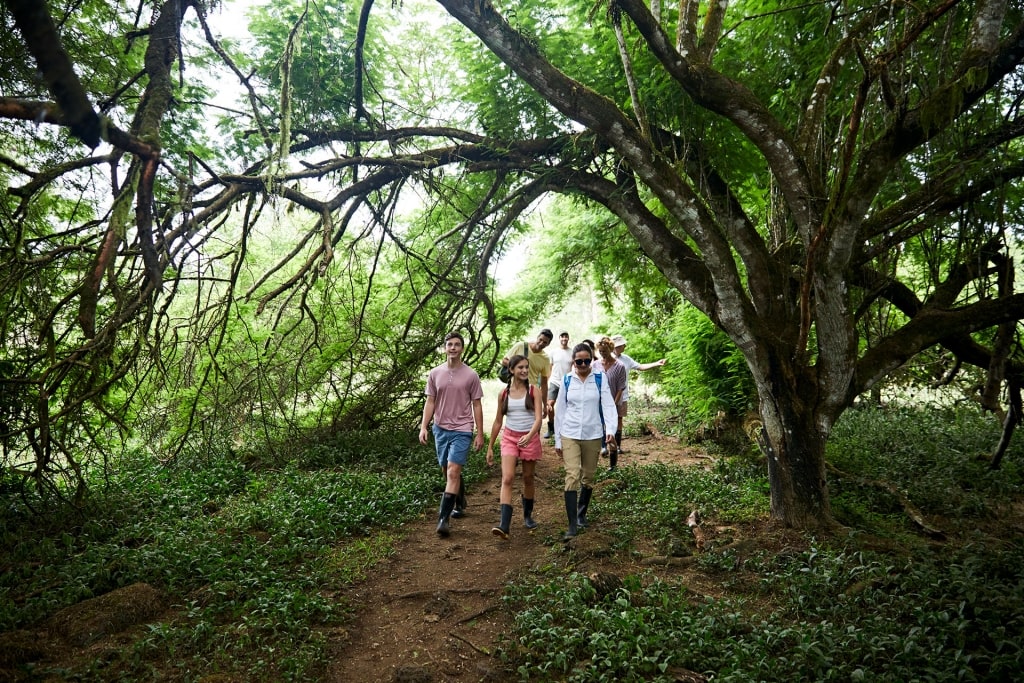
The Ranch
A vacation to the Galapagos with kids requires some advance planning. This is not a destination where you can fix your last-minute Galapagos packing list mistakes at the nearest store. Once you sail away from small towns like Puerto Ayora, it’s just you and untouched nature. On most of the Galapagos islands, there’s no human habitation and certainly no stores, which is all part of the experience.
For adults and children alike, you’ll want to make sure to bring sun protection. The Galapagos archipelago straddles the equator and the UV rays there are intense, even on cloudy days. Pack tops with sleeves to avoid burnt shoulders, a hat that won’t blow away in the wind, and sturdy closed-toe shoes for hiking over spiky lava are essential, regardless of age. Muted colors are best since the idea here is to blend into the landscape and not distract the wildlife with a fashion statement.
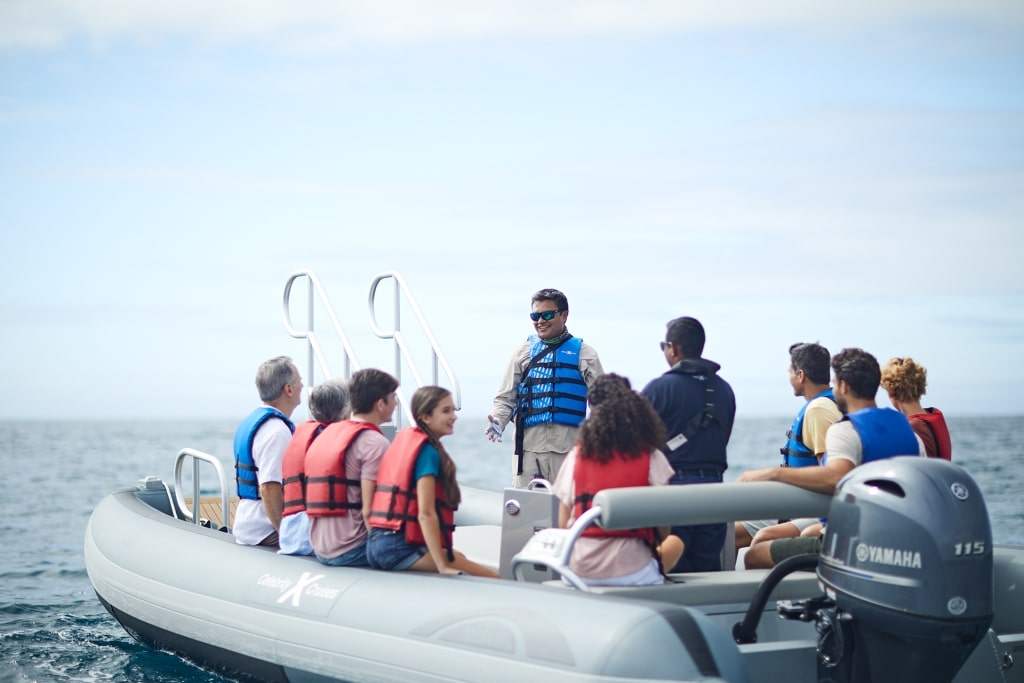
You’ll need swimwear, of course, and for younger kids, rash guards or UV-ray blocking suits are fantastic, as you don’t need to keep applying sunblock. Lightweight wetsuits are supplied for snorkel trips but you might want to bring your own smaller sizes for kids to ensure the perfect fit. Pack water shoes, too; often, you’ll arrive at some deserted beach on a panga (the inflatable, motorized dinghies used in the islands) and jump right off into the water and wade ashore.
A roll-up dry bag is great for protecting cameras and phones on trips ashore and can be secured to a kayak for paddling expeditions. Speaking of cameras, you don’t want to run out of storage in the Galapagos—and you will be taking a lot of photos. Spare memory cards are a good idea, plus whatever you need to be a top wildlife photographer, from a GoPro to a watertight case for a phone. Don’t bring a drone, as they’re not permitted in the islands.
Keep a Wildlife Checklist
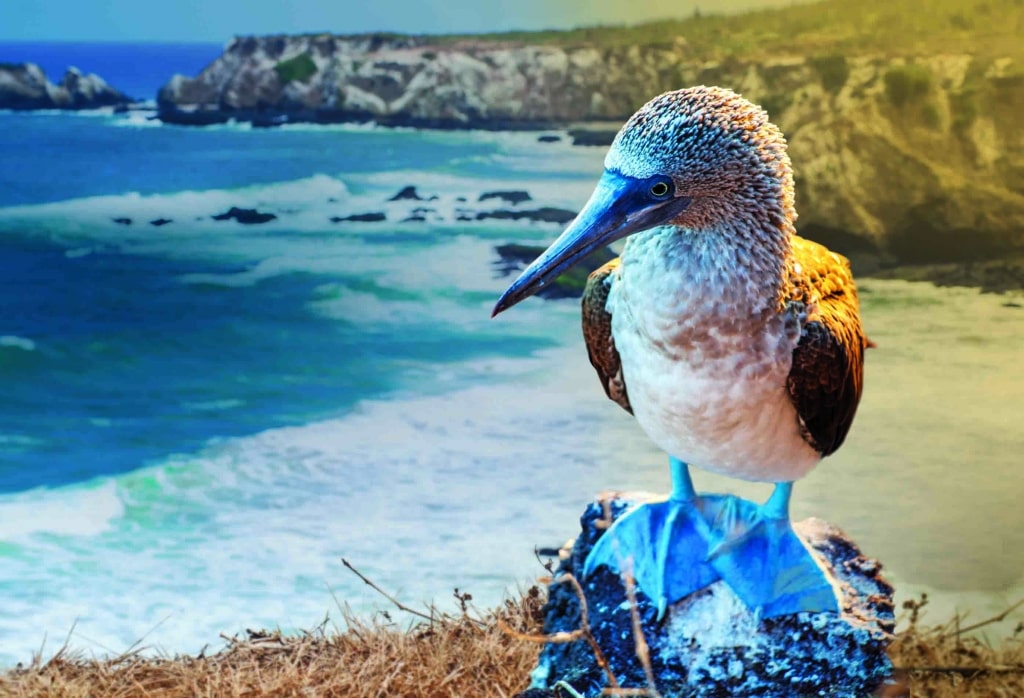
Blue-footed booby
A fun family activity is checking off wildlife as you spot it. One of the joys of the Galapagos is that kids won’t get bored trying to identify some speck of an animal in the distance. The wildlife is there, right in front of you, and is extremely calm.
Galapagos animals and birds seem oblivious to humans, on land and in the water. Spotting and identifying most species is easy, and since you can only explore with a guide, you’ll always be in the company of an expert. Younger kids should be able to identify a blue-footed booby (their feet are the clue) and quickly tell the difference between a land iguana and a marine iguana.
You’ll be amazed at how quickly the list grows. Consider expanding on this idea with vacation journals or even sketch pads for artistic kids.
Dive In
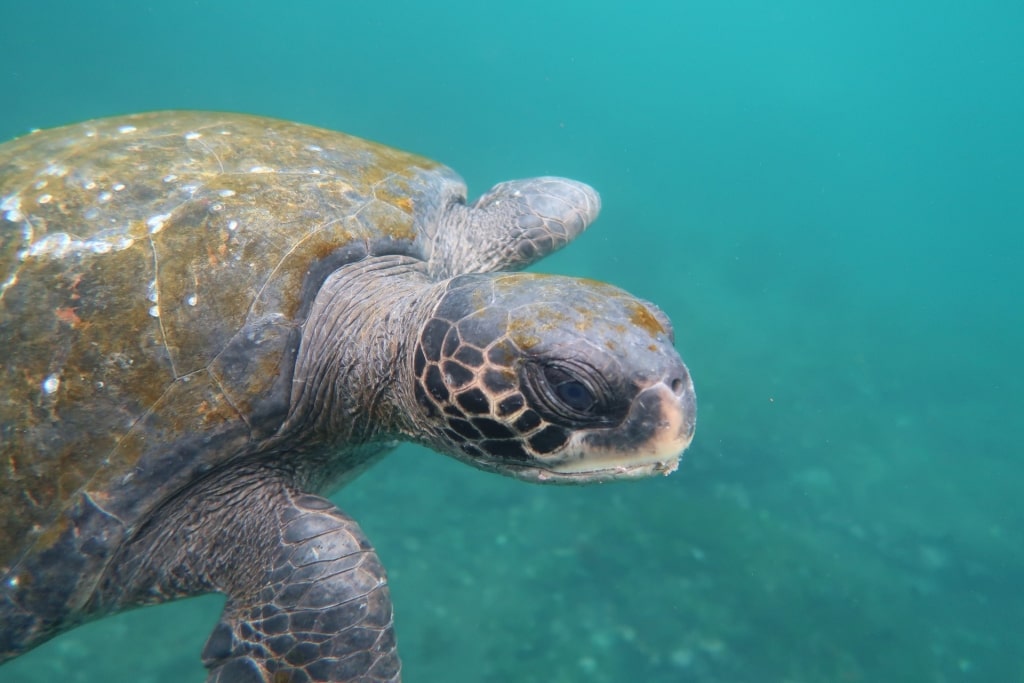
Sea turtle
What’s under the water is as fascinating as what’s on land in the Galapagos. Children will enjoy spotting their first sea turtle gliding through the blue depths, or snorkeling among cute-looking penguins, which bob on the surface next to you. They can also watch marine iguanas diving down to feed on seaweed. Sometimes, juvenile sea lions join you in the water, zipping around snorkelers like inquisitive puppies.
If you can get your children confident with a mask and snorkel before you set off, you’ll get more out of the snorkel trips available on the islands. Kids can go out with a lifejacket and of course, you will only snorkel with a guide.
All guides in the Galapagos are Ecuadorian, many of them native to the islands, so they know the best spots to see underwater life and understand the currents. Keep snorkel trips short, though; it’s all too easy to get so absorbed in the underwater world that you don’t notice yourself, or your kids, getting tired.
Go With the Flow of Activities
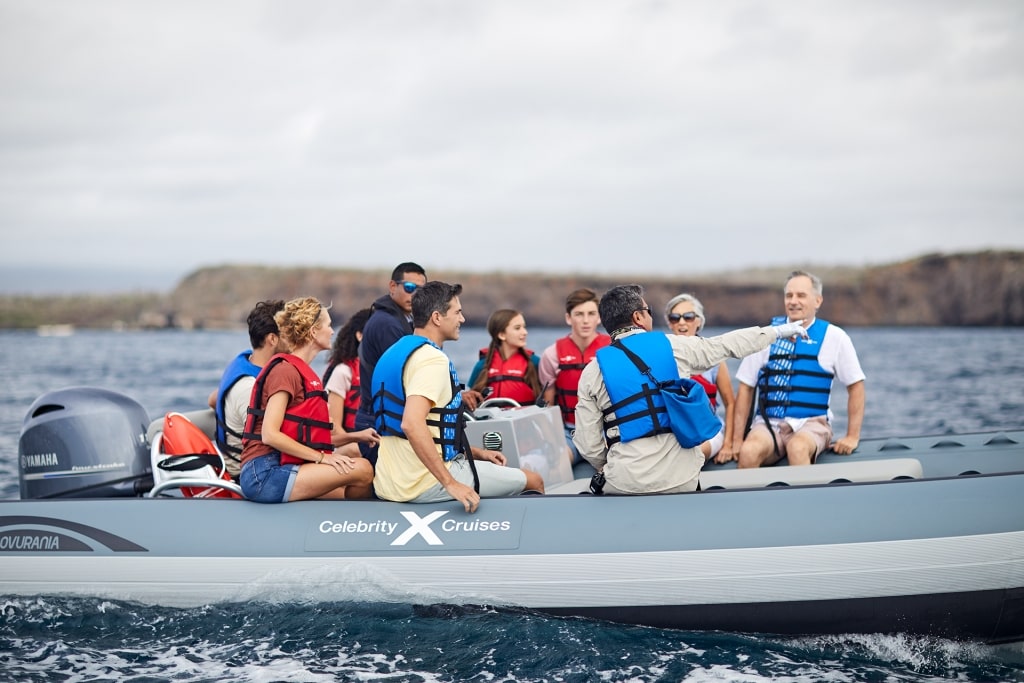
A family adventure vacation in the Galapagos includes a wealth of activities to engage in. There are different animals and landscapes to see on every island, too, so it’s rare to feel the need to take a day off—and your kids probably wouldn’t let you, anyway!
The best way to manage your time is to go with the flow. Typically, a day includes a hike, with different levels of difficulty on offer, and a second activity, from snorkeling to exploring mangrove forests. Sometimes there’s time for watersports, or an hour or so on the beach after a hike. Let your guides manage the time. They’ve got years of experience and they understand how a Galapagos vacation should be paced.
Speaking of which, it’s a good idea to use a couple of hours after lunch as some downtime, or you’ll end up with some exhausted kids. You’ll usually find afternoon activities resume at 3:00 p.m. or 4:00 p.m., so consider staying out of the sun and relaxing when the day is at its hottest. Wifi is available out in the wild but won’t be fast enough for streaming, so make sure to download some movies in advance for your kids to watch while you read or snooze.
Look But Don’t Touch!
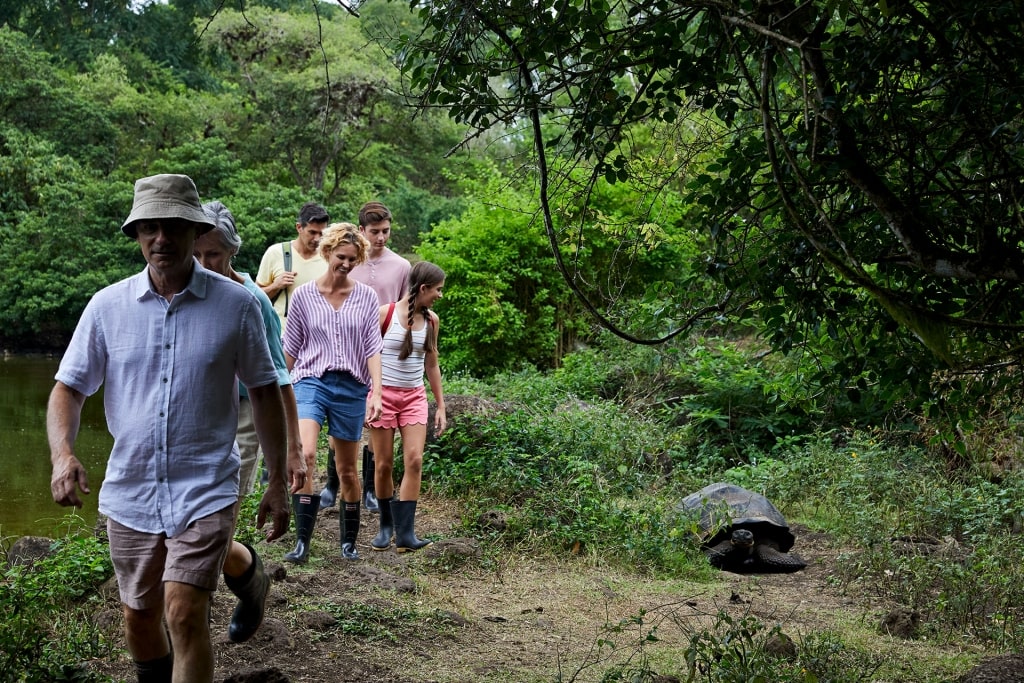
The Ranch
Before you get there, children and adults should become familiar with the rules of the Galapagos National Park. Before you leave Quito or Guayaquil, the two gateways for flights to the islands, you’ll go through biosecurity.
Any unprocessed or plant-based items are banned and will have to be handed over at the airport, so don’t bring things like apples or bananas on the flight. This is done to avoid introducing alien species to the islands. Packaged cookies and candy bars are fine, but try not to bring anything that will be difficult to recycle locally, like plastic wrappers, for example. Dispose of all trash responsibly.
There are also rules concerning animals in the Galapagos. You must always keep six feet away from wildlife, which sounds easy but sometimes isn’t, especially when sea lions or iguanas are blocking the trail, or some big-eyed seal pup appears to be beckoning, or a cheeky mockingbird lands on your day pack.
At the Galapagos, animals always have the right of way! Never feed or touch an animal. You must always stay within the marked trails. When snorkeling in the Galapagos, don’t touch anything or pick anything up from the seabed. Kids must be discouraged from collecting souvenirs, even seemingly harmless things like pebbles. This is the perfect trip on which to embrace the saying, “Take only photographs, leave only footprints.”
Read: Why Are the Galapagos Islands Important?
Sample the Local Food

Llapingachos
Traveling with a picky eater? You should be fine in the Galapagos, where tasty, colorful local food is in abundance. Kids will love llapingachos, little fried, cheesy potato patties, and for breakfast, they’ll eat up pan de yuca, delicious mini-rolls made with cassava flour and cheese.
Arroz con pollo is simply chicken with rice, while fried plantains are a tasty alternative to regular fries. Shakes and smoothies are colorful and delicious, made with fresh tropical fruit, as is the ice cream. While ceviche, raw fish cured in citrus juice, might be a bit much for young palates, all the seafood you’re offered will be as fresh as can be and you can always ask for it cooked.
Bananas, guavas, and papaya make tasty fruity snacks. Ecuador produces exceptionally good chocolate, too, so don’t overlook a few sweet treats.
Encourage Kids to Try Photography
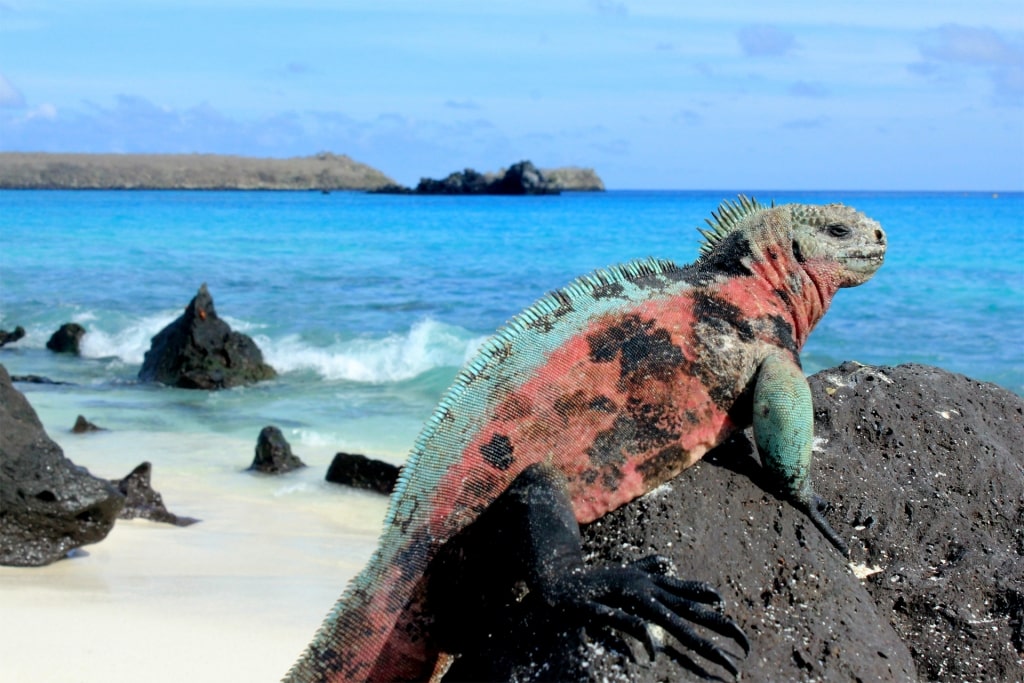
Marine iguana
The Galapagos is the ultimate destination for budding wildlife photographers, mainly because the subjects usually sit still. Young photographers should be able to get really good shots of seals and sea lions lolling on the sand, iguanas basking on rocks, and lava lizards and birds nesting on the ground.
Orange Sally Lightfoot crabs and frigate birds with their puffed-out scarlet pouches add a splash of color, while giant tortoises move so slowly that even a complete novice should be able to get a shot. Encourage kids to make their own movies with a decent smartphone or a GoPro. Remember that flash photography is banned in the Galapagos.
Read: Wildlife Photography Tips for Beginners
Enjoy Beach Time

While much of your vacation will be spent trekking on marked trails or immersed in the water, the Galapagos also has some dazzling beaches. These Galapagos beaches are dotted with animals and offer a good chance for energetic kids to stretch their legs or splash in the shallows.
Gardner Bay on Espanola Island is dazzling with soft, sparkling white sand. You can swim in the gentle surf or admire its resident colony of sea lions. At Cormorant Point on Floreana, the sand is a glittering green, thanks to the presence of olivine crystals.
Bartolome Beach is a pinky-white half-moon of sand from which you can look out for sea turtles and penguins against the dramatic backdrop of Pinnacle Rock. Las Bachas on Santa Cruz Island is simply gorgeous, a long sweep of pale sand lapped by gentle waves. Sea turtles lay their eggs there and a short walk away, you’ll find a lagoon where flamingos sometimes feed.
Learn a New Watersport
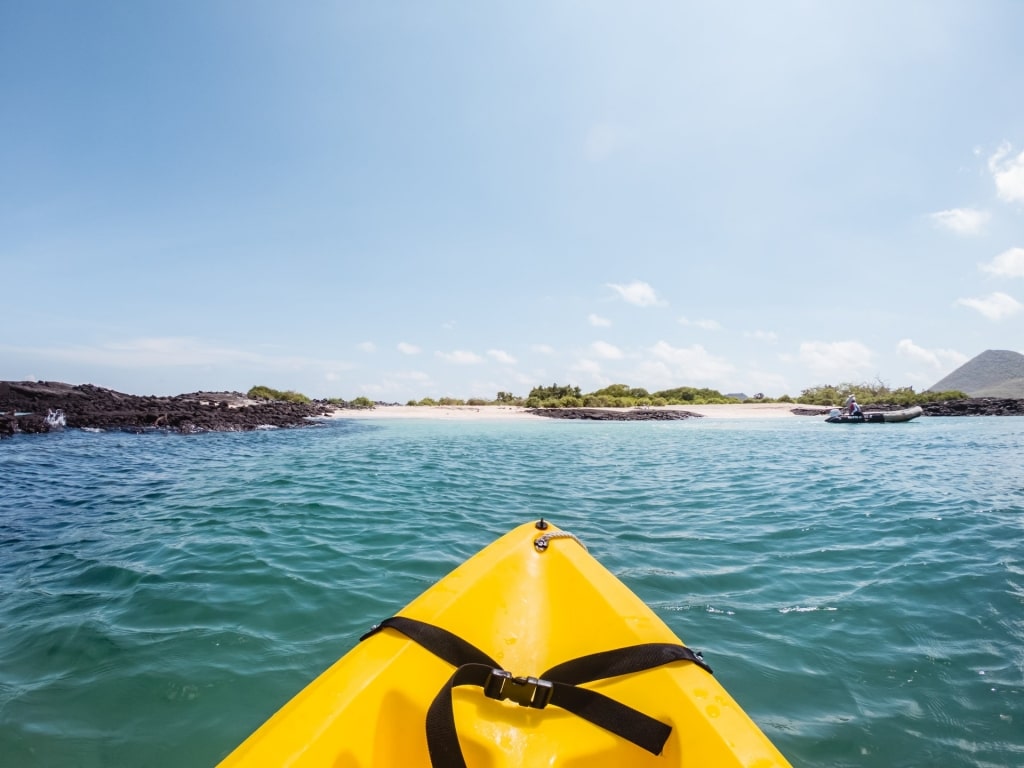
Kayak
You won’t find motorized sports in the pristine Galapagos, but the warm waters around the islands are perfect for kayaking and stand-up paddle-boarding. You’ll find plenty of double kayaks, so it’s easy for kids to start practicing with one adult on tow.
Don’t be surprised if a penguin or a sea lion pops up alongside the kayak, or if you see the shadowy figures of turtles and rays beneath you. Children, with their low center of gravity, are often naturals at stand-up paddleboarding, too.
Plan a Day In Puerto Ayora
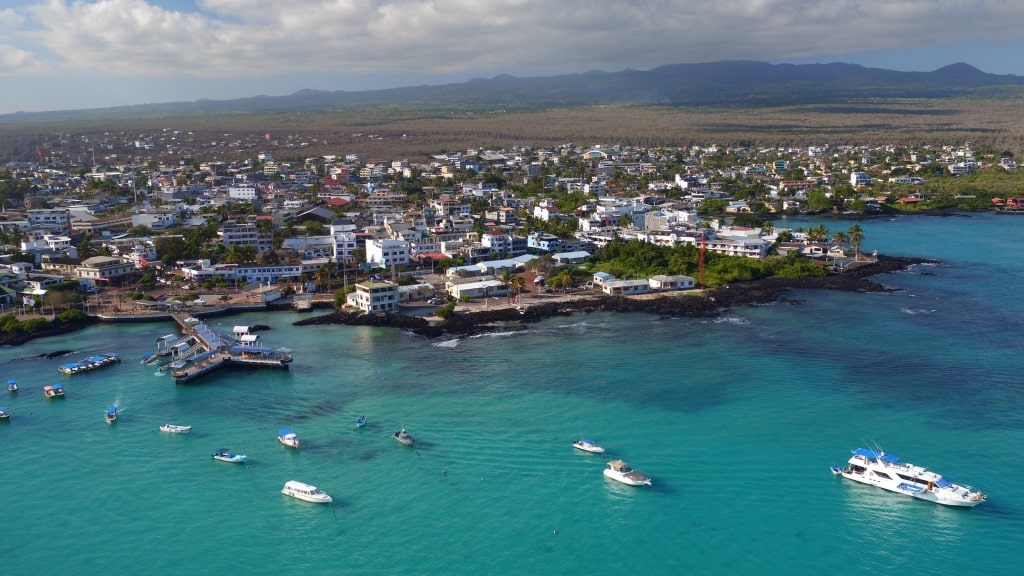
Puerto Ayora, Santa Cruz Island
The buzzing little town of Puerto Ayora on Santa Cruz Island is one of the only urban areas you’ll explore on a vacation in the Galapagos. After days out in the wild, it’s quite an assault on the senses, but kids will love the sights and sounds, not to mention the ice cream parlors and souvenir stores, and the fact that you’ll see iguanas basking on walls and sea lions snoozing on benches.
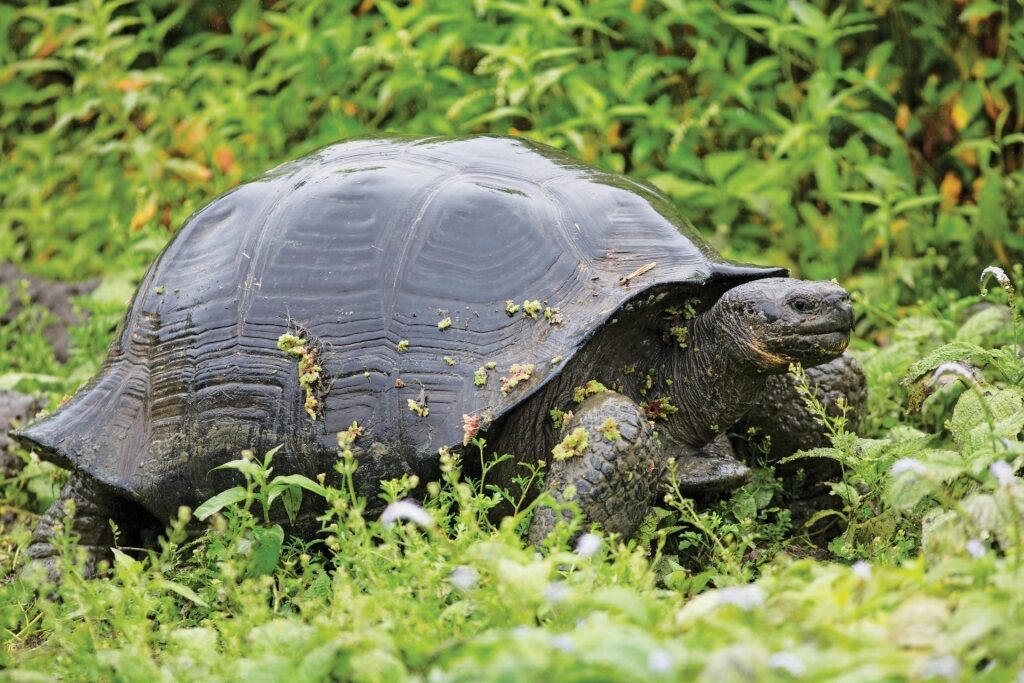
Galapagos tortoise
One of the best things to do in the Galapagos Islands is to visit the Charles Darwin Research Station, where conservationists run a captive breeding program for giant tortoises. You’ll see hatchlings, as well as the massive, slow-moving adult tortoises. Children will enjoy the Exhibition Hall, where there’s a massive skeleton of a Bryde’s whale.
Elsewhere in town, the open-air fish market offers non-stop entertainment. Watch as greedy pelicans jostle with sea lions for scraps, landing on the fishermen’s benches and squabbling among themselves, completely oblivious to the fishermen and their human customers. The market encapsulates the Galapagos; the sense that the animals rule here, not the humans.
Read: Best Cruise Destinations for Kids
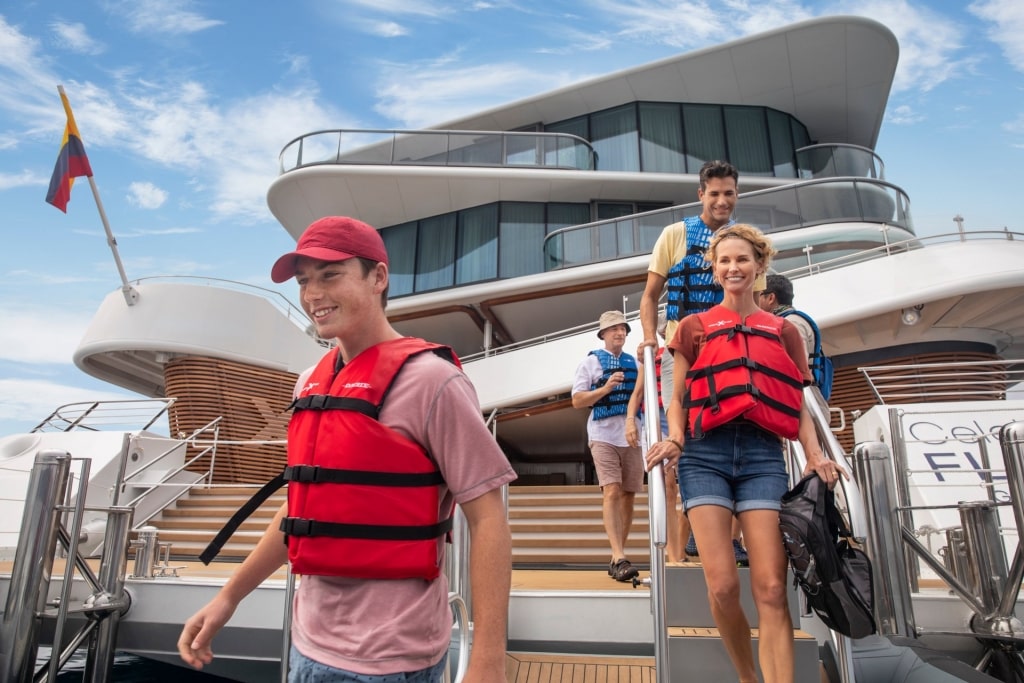
Celebrity Flora
From the ultra-luxurious comfort of the chic Celebrity Flora, there are plenty of Galapagos cruises to explore. Browse Galapagos itineraries on our website and discover the perfect experience for you.
